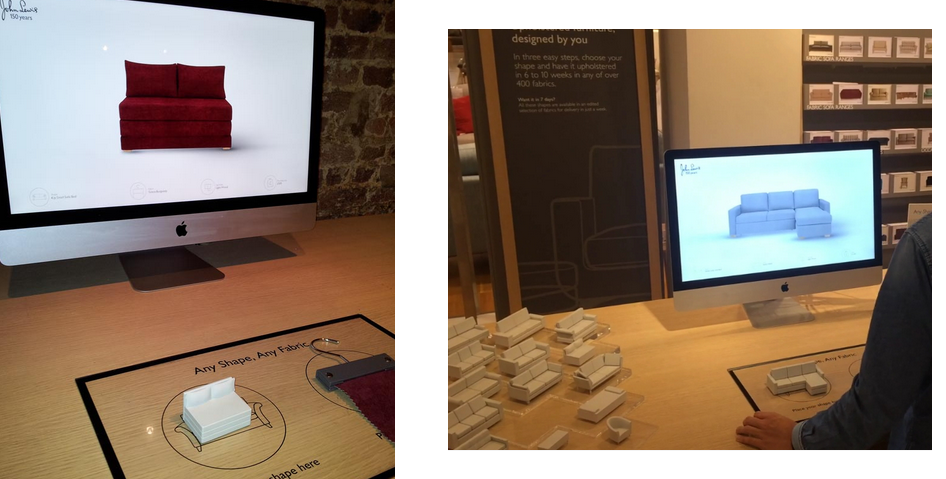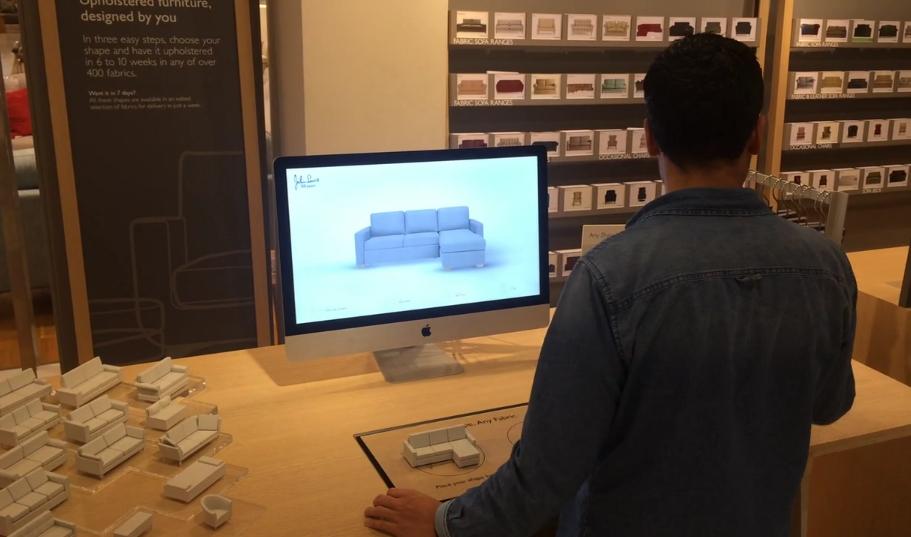They call it the interactive sofa studio, and it’s a prototype tool that uses 3D printed pieces to focus the customer’s in-store experience at the John Lewis Any Shape and Fabric store.
John Lewis is a 150-year-old London retailer, and though they have a long history, they’re hardly resting on their laurels. The company created an initiative called JLAB 2, and it’s a program of “pitching and mentoring” which calls on up to 10 technology firms to come up with bleeding edge ideas to sharpen their business practices.
“What’s important is we give them some boundaries, to say: ‘OK we want you to look in this area so there’s a bit more structure there,’” Vary says
The JLab is open to individuals, companies, start-ups and established companies, and according to Lewis “it’s more about the solution and the experience they are offering and their ability to mold their solution for us.”
Most of the work happens in what the company calls Room Y. It was Vary’s idea, and he calls it a place to bring the latest ideas to life quickly using technologies from software developers, interactive designers and engineers. One of the the Room Y projects, Sofa Studio was tested at John Lewis Oxford Street location and it will go live this month.
Sofa Studio is aimed at letting a customer design a personalized sofa. It combines 3D printed model sofas and color swatches which both contain RFID tags.
It works like this: The sofa and the swatch are placed on a tabletop reader and the information encoded within the pieces combines to produce an image on a display to reveal the customer’s choices.
“With a picture, you don’t get a sense of scale and size,” Vary says. “Looking at a picture is not the same thing as being able to play with something, and this also takes away the complexity of navigating a computer screen.”
Vary says Sofa Studio was built in 12 weeks. It used 3D printing and laser cutting to create the “reader,” and over the course of another 12 weeks, the device and the system were used in some 65,000 customer interactions.
What do you think about the Sofa Studio and how it uses 3D printing? Let us know in the Sofa Studio forum thread on 3DPB.com.

